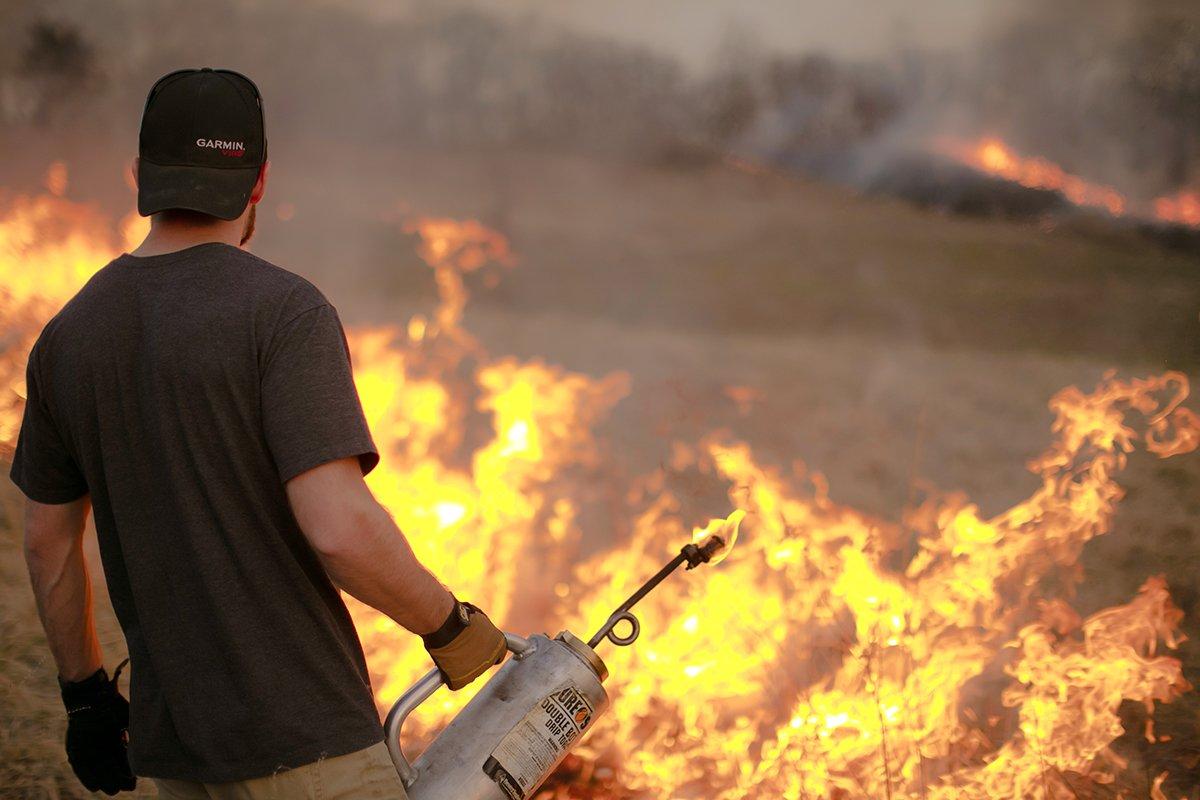Have You Implemented Any of These Tips?
Once a Quality Deer Management (QDM) program is established and its basic steps of young-buck protection and doe-population control are underway, many groups want to go further and engage in more intensive wildlife management techniques. There are many advanced management strategies that will make a good program better.
A Land for Giants
Management of the natural vegetation already growing on the property is a beneficial and economical first step. First, you must learn to recognize preferred and high-quality food plants. At the same time, you should learn to identify undesirable, noxious and invasive species. The simplest program is for participants to routinely carry some fertilizer with them as they travel around the property and lightly fertilize patches of high-quality food plants. Going further might involve mowing, disking, controlled burning and using approved herbicides to discourage undesirable vegetation. Engaging in this level of management initially requires advice of a wildlife or forestry professional who is familiar with vegetation management and deer food preferences in that specific area.
Everybody is interested in food plots these days and with good reason. Food plots are very beneficial to an advanced QDM program. They are even better when coordinated with an ongoing plan for managing the area's natural vegetation. Food plots are particularly good for areas which have been severely over-browsed. Once the deer population has been brought under control, food plots relieve some pressure on the already abused natural food sources, allowing those plants to rebound more rapidly.
However, establishing and maintaining food plots require time, effort and some expense. Once again, professional wildlife management advice is strongly advised. A professional wildlife manager, knowledgeable about local food plants and growing conditions, can advise you on food plot size, configuration and preferred plantings for your area and will help you avoid costly mistakes. Your soil should be tested as that will determine the amount of fertilization and other agricultural treatments that will result in a successful food plot.
According to Dr. Karl V. Miller, professor of wildlife management at the University of Georgia, A well-managed food plot can produce a tremendous amount of high-quality forage. However, it must be done right, or you're wasting your time and money. Check with your local biologist or county extension agent for advice on what might be the best planting for your area and your objectives. An attractive fall planting can be a tremendous aid in obtaining doe harvest objectives, but be sure to provide year-round plantings to optimize nutritional conditions for your deer.
Don't Miss: How to Improve Your Hunting Land
Refining Your Program
In addition to collection of harvest data, advanced herd monitoring can refine a QDM program. Simply noting deer observed at any time of the year while recording location, activity, feeding or other behaviors is a useful addition to the database. Noting weather conditions, barometer reading and moon phase of the observation adds additional information. The key to this data's value is its consistency, particularly in recording age and sex data which offer clues to herd population, age structure and sex ratios.
Trail cameras are becoming increasingly popular with QDM participants not only because they provide good and very consistent observation data but also because they are fun. Both still and video cameras, equipped with a light source and sensors, can be left in place night and day. These literally give you a picture of what is going on with your deer population. It will provide reliable details about herd size, sex ratio, age structure and abundance of mature bucks.
Don't Miss: The Most Effective Trail Camera Plan for Deer Hunting
More on Monitoring
Another very simple and cheap population/browsing monitor is a structure called a browse enclosure. This is simply a deer-proof fence erected around a small area of preferred deer food plants, either natural or in a food plot. Assuming no other grazing or browsing animals (particularly livestock) are present, the difference in growth inside the enclosure can be compared to the plants outside that are subject to browsing. This tells you a lot about the rate at which available food is being consumed. This directly relates to the deer population and the degree of population control that may need to be implemented.
Move your enclosure on a monthly basis to get a feel for how much forage is being produced and used, Miller said. If your enclosures indicate an extremely high rate of use, you may want to consider more food plots next year, or an increased doe harvest.
Some advanced QDM programs also incorporate buck sanctuaries where no hunting or other human activity is permitted. These should be composed of heavy cover and located in the middle of the tract, well away from the borders. The basic goal is to try to get the resident bucks to spend more time on the managed property. These internal sanctuaries are particularly useful in situations where neighboring properties are less scrupulous about protecting younger bucks. This is a high-level refinement and works best on relatively large properties.
Don't Miss: Establishing Sanctuaries for Big Bucks
Editor's Note: This was originally published December 18, 2003.
Are you a deer hunter wanting to learn how to accomplish your goals? Check out our stories, videos and hard-hitting how-to's on deer hunting.








